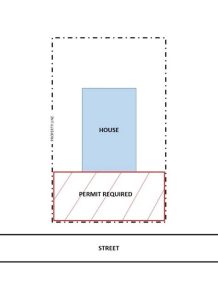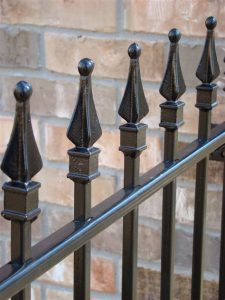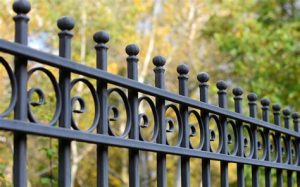How to Properly Handle Pool Fence Installations?
Installing a pool fence is a crucial step in ensuring the safety of your swimming area, providing peace of mind for families and individuals alike. With the right guidance, navigating the process of pool fence installation can be straightforward and efficient. This article will walk you through essential considerations, from understanding local regulations that govern pool fencing to selecting the right materials that balance durability and aesthetics. We’ll provide a step-by-step guide to simplify the installation process, highlight common mistakes to avoid, and emphasize the numerous benefits of a well-installed pool fence. If you’re looking to safeguard your pool while enhancing your outdoor space, read on to discover how to properly handle your pool fence installation.
Understanding Local Regulations For Pool Fencing Installations
When it comes to pool safety, understanding local regulations for pool fencing installations is essential. These regulations vary significantly depending on the area, and adhering to them ensures not just compliance but also the safety of children and pets. Here are some critical points to consider:
- Research Local Codes: Each municipality typically has specific building codes that dictate the height, type, and installation procedures for pool fences. Start by checking with your local building department or regulatory authority.
- Permitting: Some regions require permits before you can install a pool fence. Verify whether you need a permit, and if so, ensure you have the proper documentation in place.
- Height and Material Standards: Regulations often specify minimum height requirements (commonly 4 to 5 feet) and acceptable materials (such as wood, vinyl, or aluminum). Ensure your selected materials comply with these standards.
- Gates and Latches: Many local codes mandate that pool fences must have self-closing and self-latching gates that open outward, away from the pool. The latch should be positioned out of reach of small children.
- Visibility Requirements: Some regulations may outline visibility requirements, mandating that the pool area remains visible from the house or other areas for easy supervision.
To avoid fines or having to make costly adjustments later, thoroughly reviewing and adhering to local regulations is vital when learning how to properly handle pool fence installations.
How To Choose The Right Materials For Your Pool Fence
Choosing the right materials for your pool fence is crucial not only for aesthetics but also for safety and durability. When considering how to choose the right materials for your pool fence, take into account the following factors:
| Material | Pros | Cons |
|---|---|---|
| Wood | Natural look, customizable | Needs regular maintenance, may warp |
| Vinyl | Durable, low maintenance | Can fade over time, limited styles |
| Aluminum | Lightweight, rust-resistant | Can be less sturdy than other materials |
| Glass | Elegant look, unobstructed view | Expensive, requires professional installation |
| Chain Link | Cost-effective, easy to install | Less privacy, not very appealing |
When selecting the material, it’s essential to consider the local climate, maintenance requirements, and the degree of privacy and security you desire. For instance, wood may be ideal for a rustic-themed garden but may require more upkeep in humid climates. In contrast, vinyl and aluminum fences offer easier care but may not fit everyone’s aesthetic preferences.
Additionally, ensure that the chosen material complies with local regulations regarding pool fencing. Select colors and styles that blend well with your property for a harmonious look. By carefully weighing these factors, you can effectively determine how to make the best choice for your pool fence materials, ensuring both safety and visual appeal.
Step-By-Step Guide For Installing A Pool Fence
Installing a pool fence can seem daunting, but by following these steps, you can ensure a safe and secure environment around your pool.
| Step | Description |
|---|---|
| 1 | Check Local Regulations: Before you start, familiarize yourself with the local building codes and regulations regarding pool fencing. This will help you determine the height, type, and positioning of the fence. |
| 2 | Gather Required Materials: Choose the right materials for your pool fence based on your preferences and needs. Common materials include wood, vinyl, aluminum, and mesh. Make sure you have all necessary tools and supplies on hand. |
| 3 | Measure and Mark the Area: Use stakes and string to mark the outline of the fence. Ensure you account for the proper distance from the pool edge, following local safety guidelines. |
| 4 | Install Fence Posts: Dig holes for your fence posts at marked intervals. Ensure the holes are deep enough for stability, and place the posts in the holes. Use concrete if necessary to hold them in place. |
| 5 | Attach Fencing Panels: Once the posts are secure, attach the fencing panels to the posts. Ensure they are level and aligned properly to avoid gaps or lean. |
| 6 | Add Gate Mechanisms: If your fence includes a gate, follow the manufacturer’s instructions for installing the hinges and latch. Ensure the gate opens away from the pool and latches securely. |
| 7 | Inspect for Safety: After installation, walk around the fence to check for stability and minor adjustments. Make sure there are no sharp edges or gaps that could pose safety risks. |
| 8 | Regular Maintenance: Plan for periodic maintenance checks to ensure the fence remains secure and effective in providing safety. |
By following these steps on how to properly install a pool fence, you’ll create a safer environment for everyone while enjoying your swimming pool. Remember to always adhere to local regulations and guidelines throughout the installation process.
Common Mistakes To Avoid During Pool Fence Installations
Installing a pool fence is a critical safety measure, but mistakes during the process can undermine its effectiveness. Here are some common pitfalls to avoid:
- Neglecting Local Regulations: Failing to comply with local regulations can result in fines or even the requirement to remove your installation. Always check the local building codes before commencing work.
- Inadequate Ground Preparation: Not preparing the ground properly can lead to instability in the pool fence. Ensure the area is level and free of debris for a sturdy installation.
- Improper Measurements: Incorrect measurements can lead to gaps or insufficient coverage. Always double-check your measurements before cutting materials.
- Choosing Low-Quality Materials: Compromising on quality to save money can lead to safety hazards. Invest in durable and weather-resistant materials for better longevity.
- Skipping the Gate Installation: A pool fence without a properly installed gate can render the fence ineffective. Ensure the gate is secure, self-closing, and self-latching for optimal safety.
- Ignoring Visibility: If your fence blocks visibility to the pool, it may hinder supervision. Opt for fence designs that allow visibility while maintaining safety.
- Overlooking Maintenance Needs: A well-installed fence requires ongoing maintenance. Regularly inspect the fence for signs of wear and tear to ensure continued safety.
- Faulty Installation Techniques: Using incorrect installation techniques can compromise the fence’s strength and durability. Follow the manufacturer’s guidelines closely or consider hiring professionals.
- Underestimating the Importance of a Barrier: Any gaps in the fence could create pathways for children or pets to access the pool. Ensure there are no climbable surfaces and consider anti-climb features.
- Failing to Plan for Landscaping: Plants and decorative elements can encroach upon the fence, posing risks. Plan your landscaping to maintain clear access to the fence and gate.
By being aware of these common mistakes and taking necessary precautions, you can ensure a successful installation of your pool fence while enhancing safety for your family and guests.
Benefits Of Properly Installed Pool Fences For Safety
Investing in a pool fence is crucial for ensuring the safety of children and pets around swimming areas. A properly installed pool fence acts as a reliable barrier, significantly reducing the risk of accidental drownings. Here are some key benefits of having a well-installed pool fence:
- Enhanced Security: A strong and tall fence limits access to the pool, effectively deterring unsupervised individuals, particularly young children.
- Peace of Mind: With a secure pool fence, parents can enjoy a sense of relief knowing their loved ones are protected from potential accidents.
- Legal Compliance: Many local regulations mandate pool fencing. Proper installation ensures compliance, avoiding potential fines and liability issues.
- Increased Property Value: A safe, attractive pool area can enhance your home’s value. Potential buyers often view a well-fenced pool as a significant advantage.
- Customizable Options: Pool fences come in various styles and materials, allowing homeowners to select an option that complements their landscape while prioritizing safety.
Understanding the how to properly handle pool fence installations can lead to a safer environment, ultimately benefiting both the safety of individuals and the overall appeal of your property.
Frequently Asked Questions
What is the importance of installing a pool fence?
A pool fence is crucial for safety, preventing accidents and unauthorized access to the pool area, especially for young children and pets.
What are the legal requirements for pool fence installation?
Many regions have specific regulations regarding pool fencing, including height, materials, and gate specifications. It’s important to check local laws before installation to ensure compliance.
What materials are best for pool fences?
Common materials for pool fences include aluminum, glass, and vinyl, each offering different aesthetics and durability. Choose a material that fits your needs and complies with safety standards.
How high should a pool fence be?
The general recommendation for a pool fence height is at least four feet. This height helps prevent children from climbing over the fence and accessing the pool unsupervised.
What features should a pool fence gate have?
A pool fence gate should be self-closing and self-latching, ensuring it remains closed when not in use. Additionally, the latch should be located high enough to be out of reach of young children.
Should I hire a professional for pool fence installation?
While some may choose to install a pool fence DIY, hiring a professional can ensure correct installation, adherence to safety regulations, and proper alignment, which can greatly enhance safety.
How can I maintain my pool fence over time?
Regular maintenance includes inspecting for any damage or wear, cleaning the fence to prevent rust or staining, and ensuring that gates and latches operate smoothly to maintain safety.





